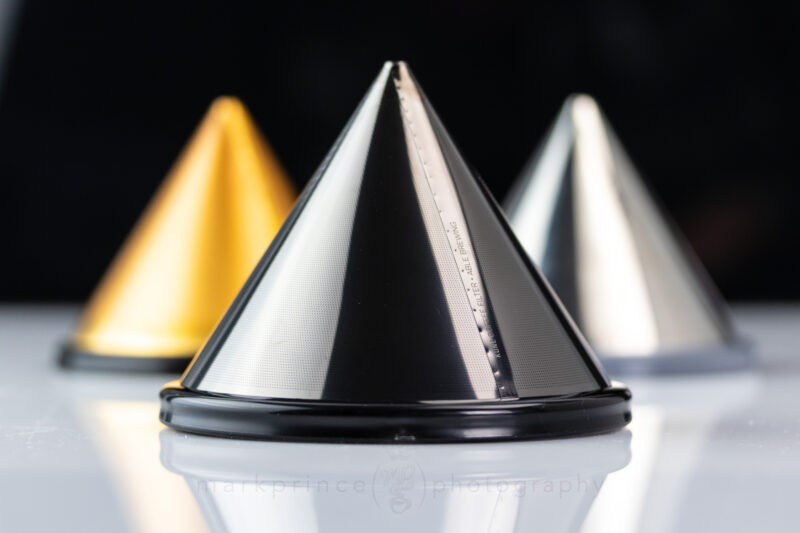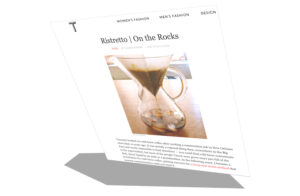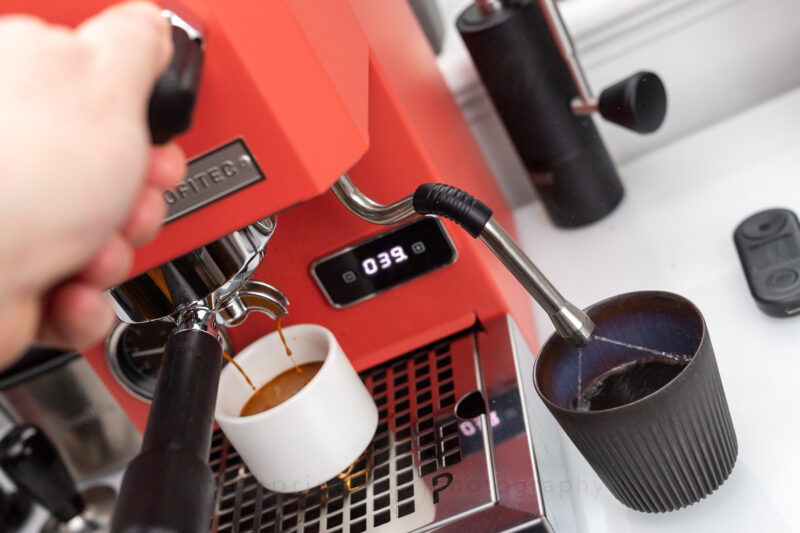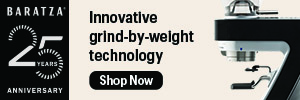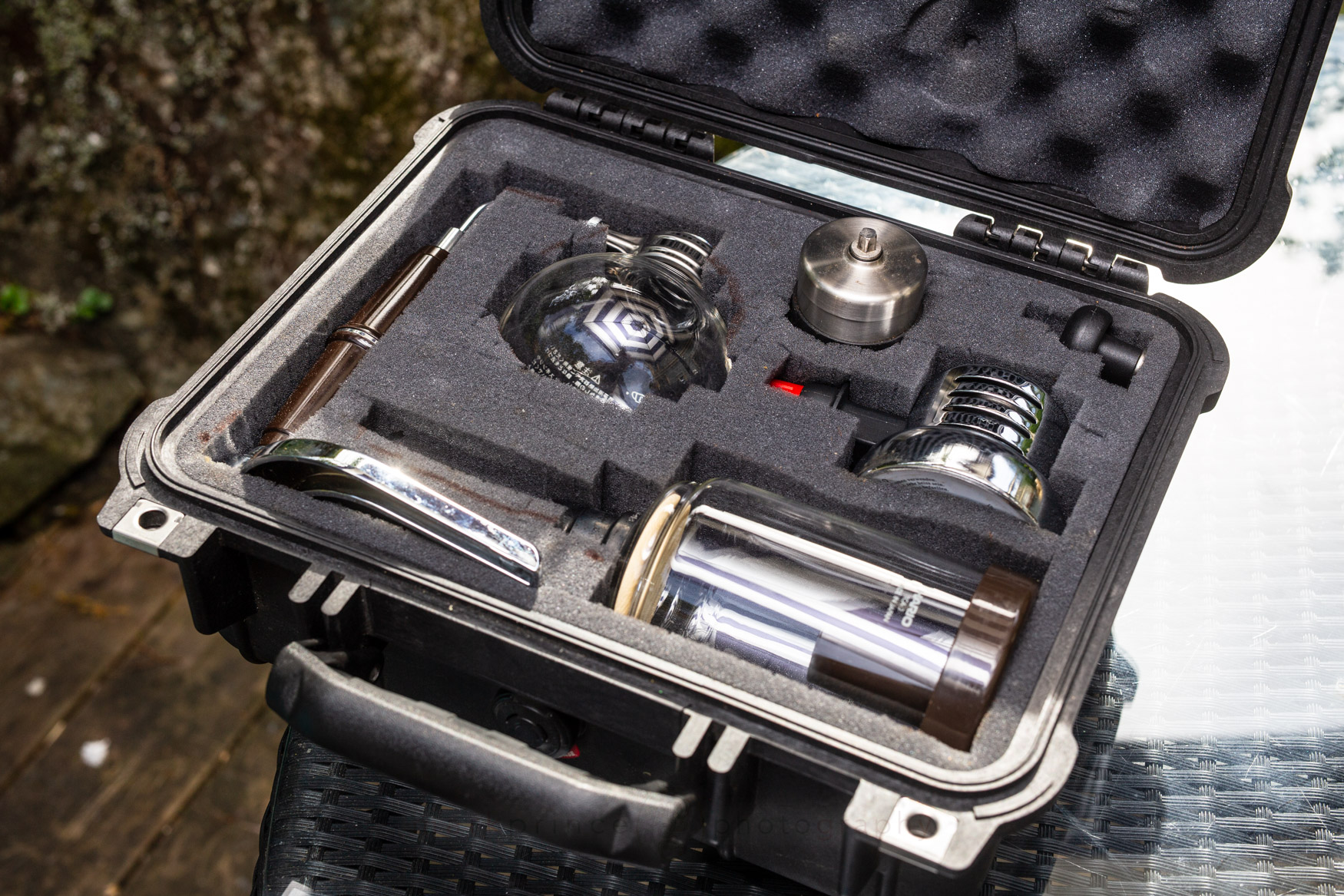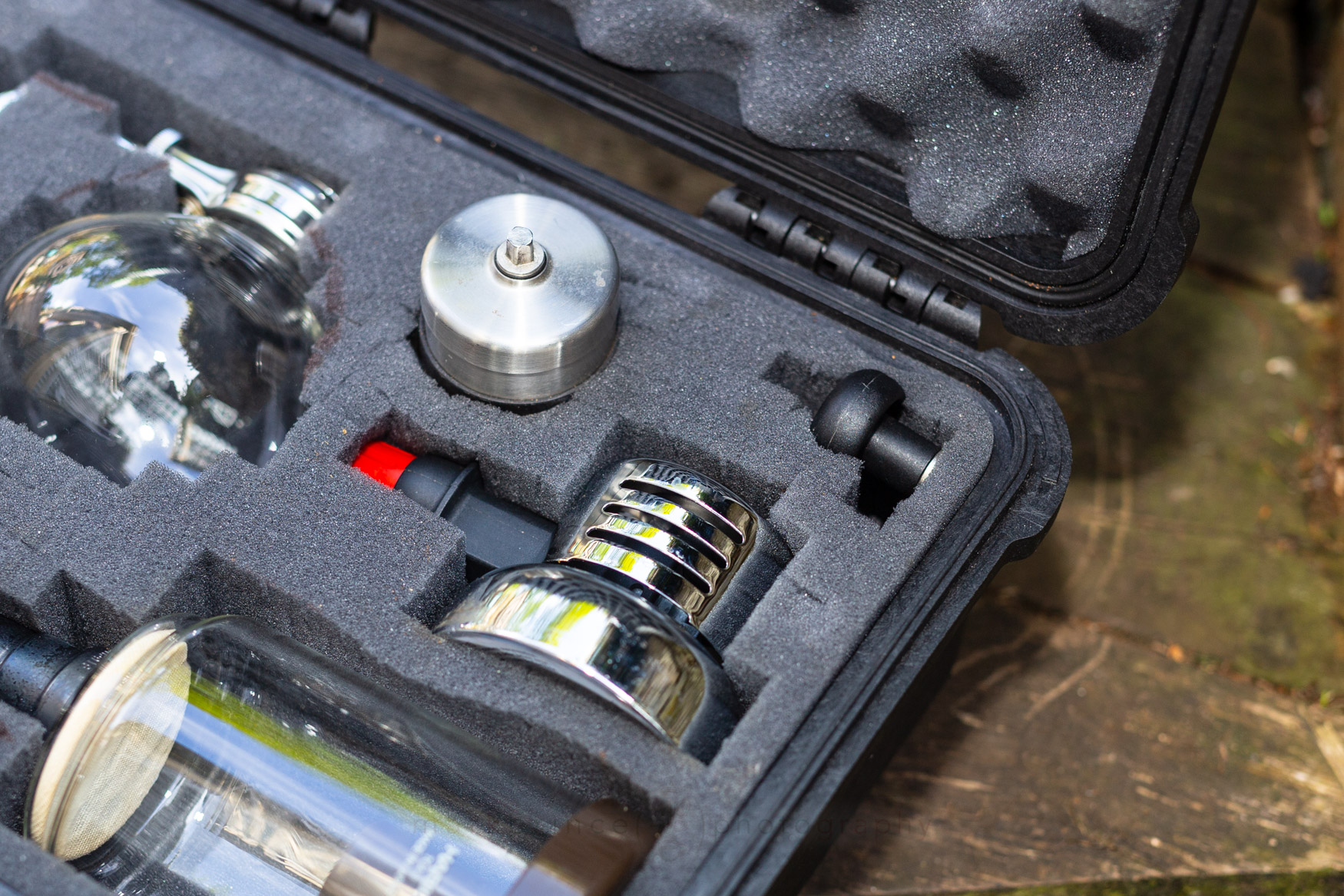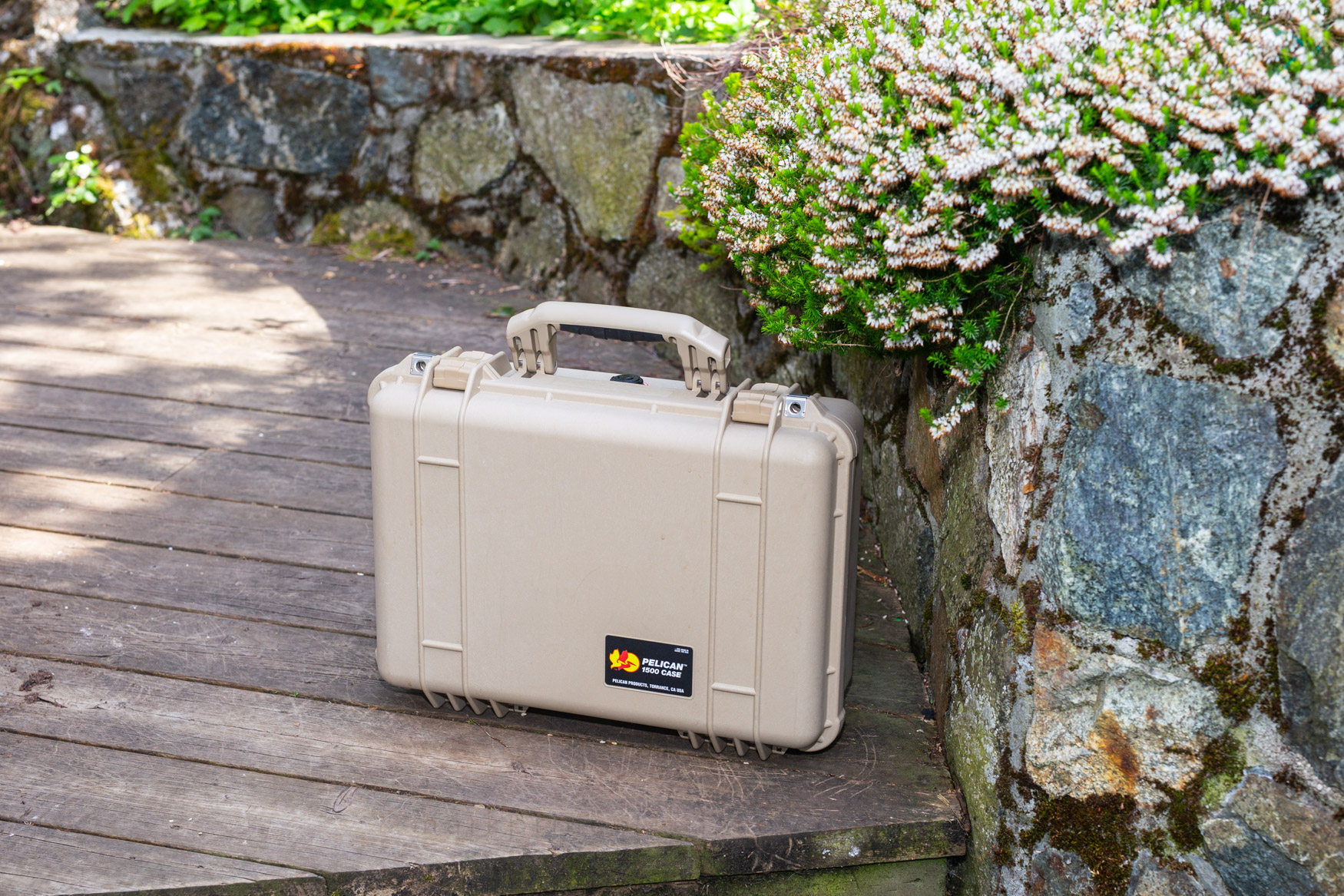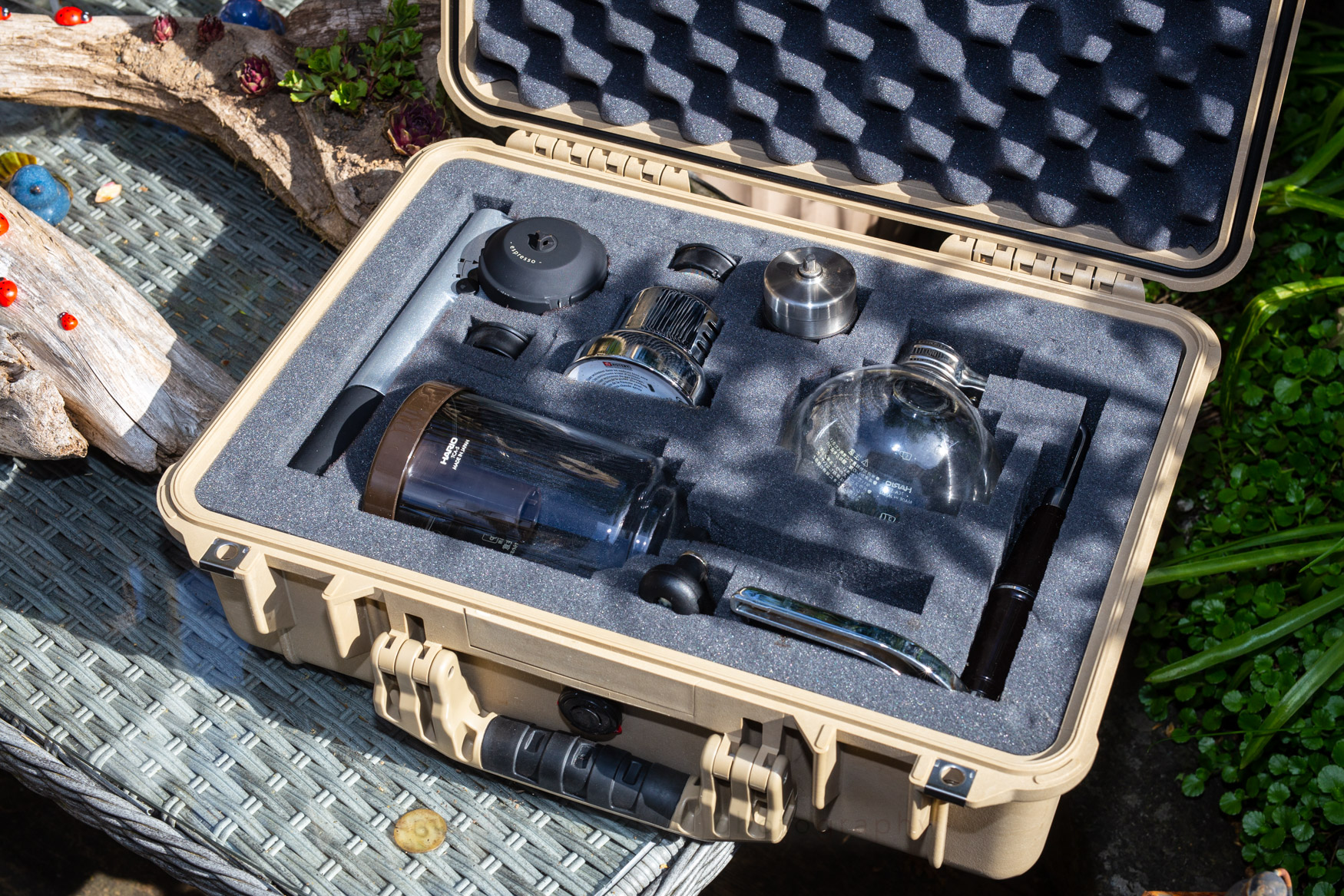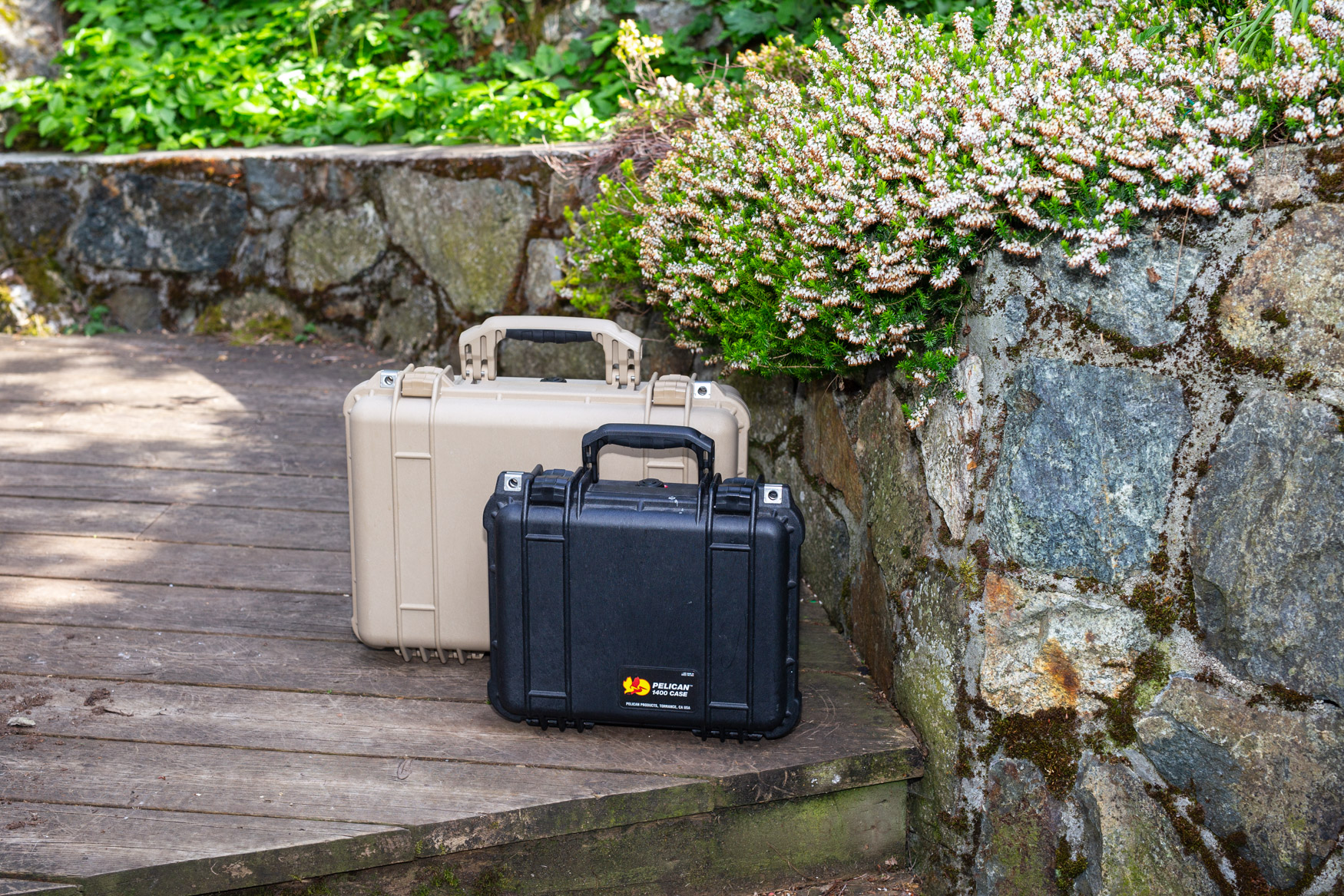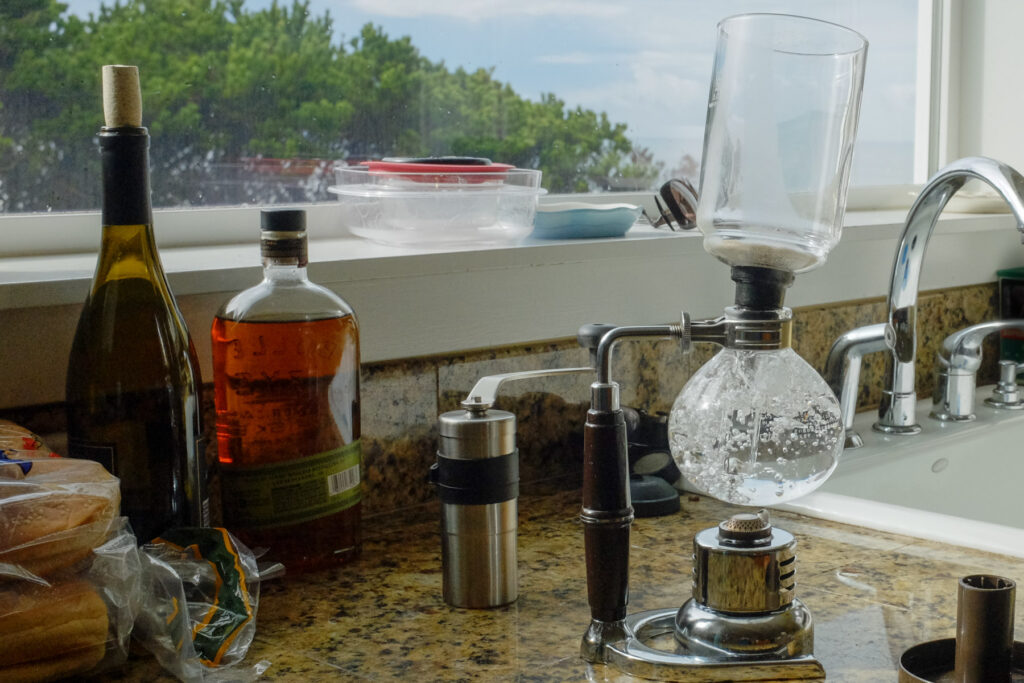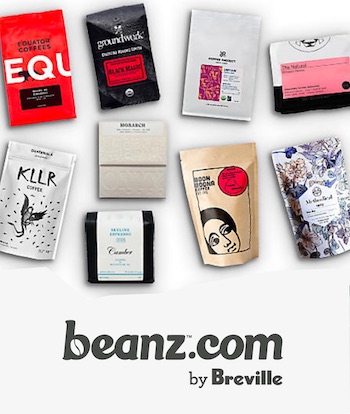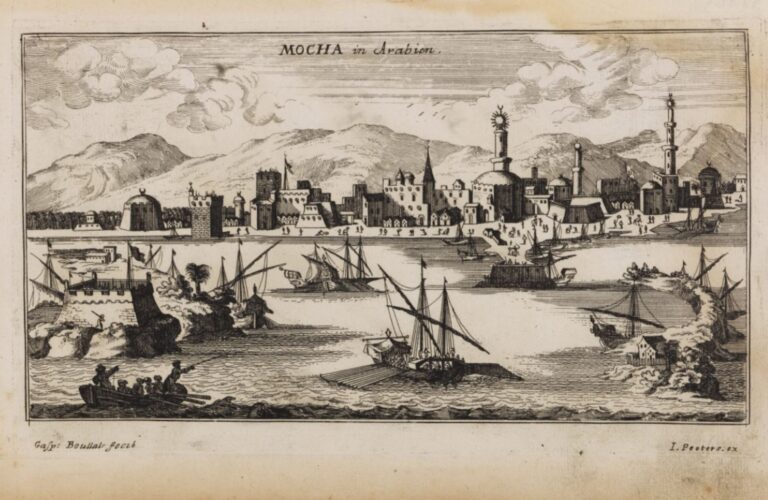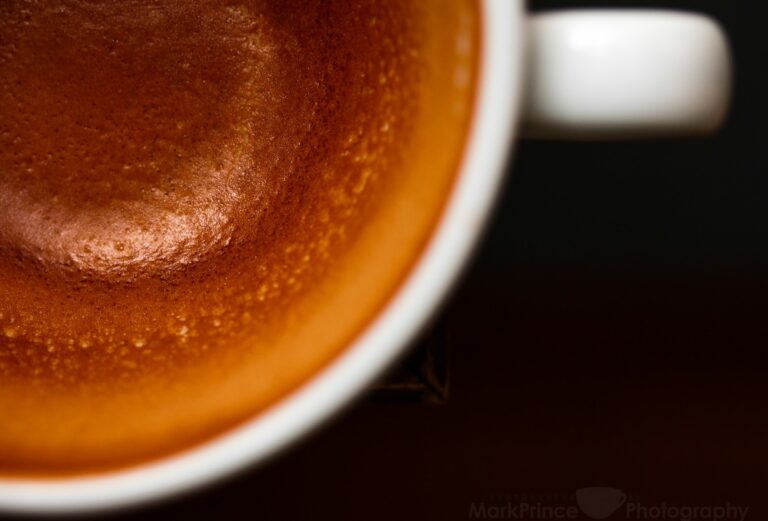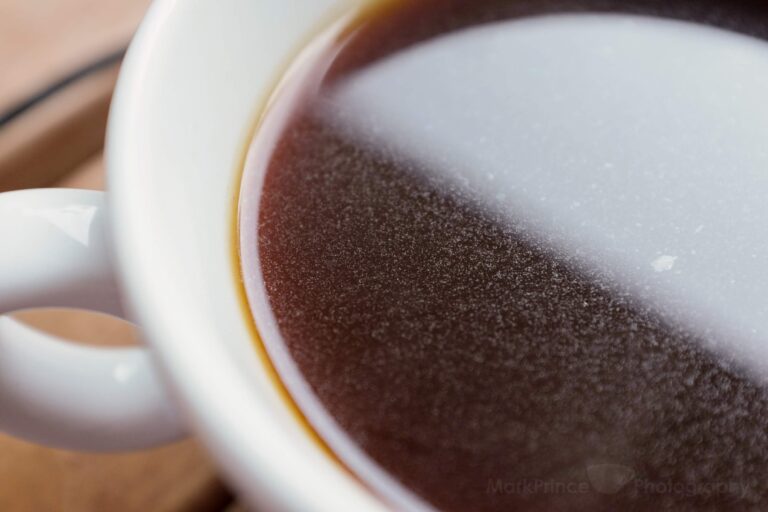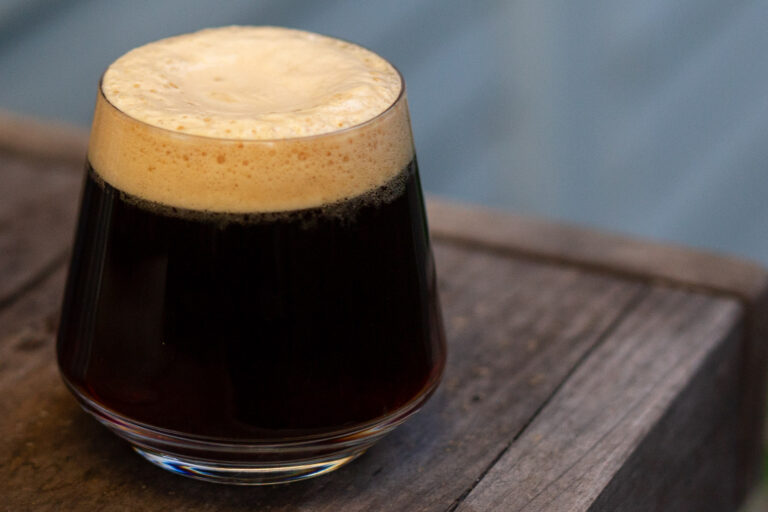A few summers ago, we took a vacation down to the Gulf Islands of Washington State. Being a complete CoffeeGeek myself, I wanted to make sure we had good coffee options for the trip. My favourite non-espresso method for making coffee is the siphon coffee brewing method, but that’s a whole lot of glass and fragility we’re talking about here. Of course, my first coffee love is espresso, and that was another option I looked into, but for this particular trip, I settled on siphon coffee.
We ended up taking a 5 cup (600ml max) glass Hario siphon coffee maker with a butane heater and a Porlex hand grinder. A few problems arose right away. The most glaring was I had no easy way to transport a fragile glass siphon coffee brewer in any kind of safe, yet compact manner. Second, I forgot to fill the butane table torch before leaving, and while I had enough fuel in it to do the two minutes brew times using pre-heated water, I didn’t have enough fuel to heat up water from cold.
For transport, I wrapped up the Hario siphon, disassembled, in tea towels and put all the parts in a cardboard box. Travelling by car, it was fine, but I certainly wouldn’t want to lug it this way on a bicycle or hiking. I was worried about dropping the box or somehow snapping the siphon tube off the top vessel of the brewer. The Porlex grinder, butane burner and coffee went into my suitcase.
In the end, it did work. We couldn’t find a store that sold the butane canister we needed to refill the tabletop butane burner (it uses a very tiny nozzle), so I had to get creative in heating up water. We ended up using a microwave oven that was in a common area of the place we stayed at to heat up several mugs of water, then filled the siphon and let the diminishing fuel we had in the burners do a 2 minute brew time.
Ahh, the things we do for quality coffee. The entire time I thought, ‘there has to be a better way!’
When I got home, I wondered if anyone made or manufactured a travel coffee siphon setup. I googled everything. I surfed Alibaba. I asked in our CoffeeGeek forums. I asked people on social media. No one had ever heard of such a thing.
So I decided to make one… and I ended up making two.
A Siphon Coffee Travel Case
Almost 2 decades ago, the original owners of Espro showed up at my house in Richmond, BC, to show off their first product. It was a click-tamper, one that compressed and clicked when you hit 30 pounds of pressure. The tamper was innovative and impressive, but the way they presented me with a pair of the tampers (one round bottom, one flat bottom) was memorable too: they showed it to me in a Pelican hard case that had the tamper places cut out. The tampers were in a cocoon of foam. Impressive.

Very late prototype Espro Tampers, in a custom Pelican case that the Espro founders presented the tampers in.
It was that Pelican Case that gave me an idea for a travel siphon setup. When you buy a Pelican case, it comes with a full set of the cushioning foam inserts designed to be shaped and cut to accommodate anything you want to protect inside the cases. Once your items are in that foam cocoon, supposedly you can drop these cases off a 2 storey roof and the items inside should survive the impact.
I knew I wanted a couple of options here. I wanted the smallest case I could get away with for a 3-cup travel siphon setup. I also wanted a bigger case that gave me additional options, including a 5 cup siphon, and possibly even a portable espresso maker included.
Both cases had to hold a siphon brewer, a butane burner and a grinder. That was the minimum. So I took my glass 3 cup Hario Technica siphon, a Porlex grinder, and a tabletop butane burner, and laid them out flat on top of sketch paper. I worked to find an ideal layout where everything would fit, everything would be padded and safe, in the smallest possible footprint. Why the Porlex? That grinder had a good reputation and it was one of the shortest mini hand crank grinders on the market at the time.
I repeated the process with a 5 cup Hario Technica siphon, a Porlex grinder, a tabletop butane burner, and a Handpresso bicycle-pump styled espresso maker.
Once I was happy with the layouts, I took measurements (in all 3 dimensions), and found suitable Pelican Cases to work with. For the Three Cup Case (as I started calling it), a Pelican 1400 series case would be a tight fit but I knew I could make it work. For the Five Cup Case, a Pelican 1500 case was my best option, though it was a bit bigger than my sketched out layout. I ordered both, and got down to work.
The Three Cup Case
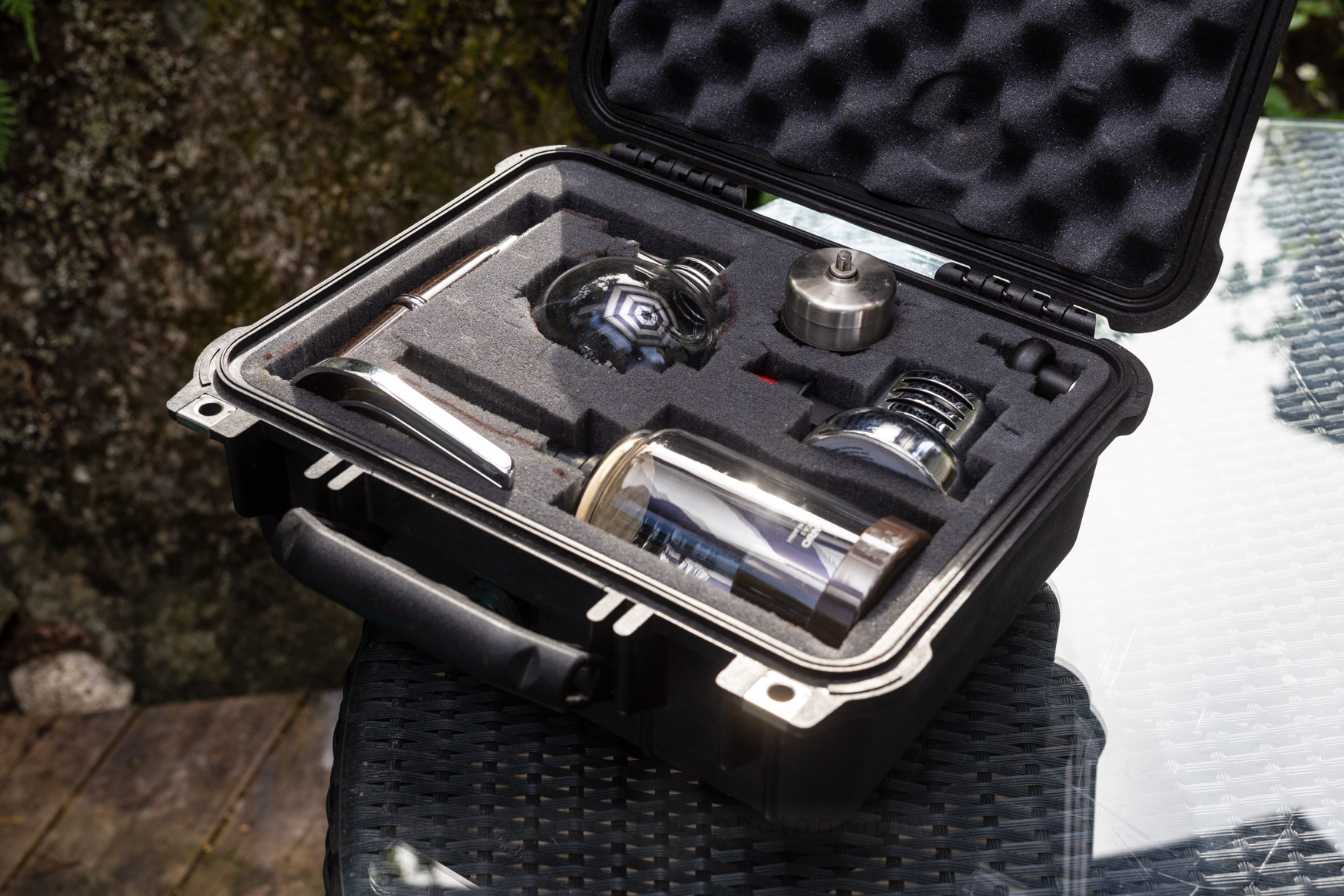
Using the Pelican 1400 series, this case holds a 3 cup siphon brewer, a butane burner, a grinder and its crank arm, and a bamboo stirring stick.
This was my primary case, and I really wanted it to work well. The inside dimension within the foam casing is 30cm by 22.5cm, and 13cm tall. For everything to fit, the Porlex grinder would have to go into the case standing up, and it’s about 12cm from its base to the metal bar the spindle sits on. The butane burner I chose has a wide arm on it, and I had to make sure that was accommodated as well.
The layout I chose disassembled the siphon so I could place the base stand with the bottom bowl pointing one direction, and the siphon top bowl section sitting at a 90 degree angle to the base, so I could overlap them.
I also wanted to get a bamboo stirrer in the case, but that was no sweat at all – it slotted at the edge of the foam insert. To get the Porlex’s crank arm into the case, I actually cut a tunnel for it to fit and curve sideways, under the top edge of the case.
The Pelican’s foam insert has all these small foam cubes slightly cut out, which you can take a knife to and cut out fully to accommodate the shape of anything you want to put in the case. I laid down my sketch paper, drew out the shape in the foam, and went to work. For the bowl areas, I removed the foam in layers, creating a nest shape that really protects them. For the deep areas, I just cut down to the last few layers of foam cubes. For the Porlex area, I left one layer at the bottom, cutting everything else out. For the butane burner, I cut shallow for the handle portion, and a deep bowl for the main burner area.
And it worked. I had a siphon travel case. And it fit most common siphons based on the Hario / Yama / Tayli siphon designs (which themselves are based on the Silex siphon from 1918!). Next to work on was the Five Cup Case.
The Five Cup Siphon and Espresso Case

Using the Pelican 1500 series case, here's the 5 Cup Case, open and with all it's goodies installed.
The 5 Cup Case was actually pretty easy to do. The inner dimensions (42.5cm by 28.4cm, 15.5cm tall) meant I had a lot more room to play with. In fact, though my initial intent was to create a case for a 5 cup siphon, grinder, burner and a Handpresso espresso maker, I am sure I could have designed the layout to include an Aeropress as well and possibly a few espresso cups (maybe for the next design).
I did get a 5 Cup Hario Technica in this case with ease. The Porlex grinder fit a lot better (I had more vertical room) and I was able to put the high end butane torch facing down, so the handle went deep into the case. The Handpresso lays on its side, but in retrospect, I could have designed it so it laid with its brewing area up top, handle below, and that would have given me more foam area to work with, putting an Aeropress in. I also created cutouts to hold a few spare Handpresso filters.
Sadly, it seems like the Handpresso is no longer available from vendors in the USA, but can be ordered direct from France or you can go with another option, like the Minipresso GR.
All in all, it is a great travel case, but I am itching to design version two of this case, so I can get a brew coffee device as well as two espresso cups into the case along with all the current contents.
Travelling with the Siphon Cases
These are no lightweights, designed for ultralight backpacking or bicycle camping. The Pelican cases and their contents are pretty heavy. The 1400 Pelican measures 34cm long, 29cm deep, and 15.5cm tall, and weighs 2kg with the foam inserts. The 1500 Pelican is more beefy; it’s almost half a meter wide, 36cm deep, 18cm tall and weighs 3.2kg empty.
But they are heavily protected cases ideal for fragile items. And I inadvertently tested them once in a real moment of stupidity. I left the 1400 case – loaded with the 3 cup siphon, burner, and grinder – on the trunk of my car after we did an afternoon picnic trip on Vancouver Island. The case actually stayed put as I backed out of the gravel parking lot, and drove away at a slow speed. It bounced off the trunk when the road transitioned from gravel to tarmac. I heard the noise, and immediately realised my mistake.
We stopped, I walked back and picked up the case which barely had any scuffs. Gave it a shake – no sound – so I put it back on the trunk of the car and opened it up.
Everything was pristine. Sigh of relief.
What Does it Cost
Bottom line: this is not a budget setup. The cheapest you’ll be able to build out the Three Cup Case is at around $250. The Five Cup Case with a Minipresso GR (or Handpresso if you order one from France), extras, and maybe an Aeropress tossed in? You’re looking at $350, but at least you’re packing 3 complete brewing methods inside.
The Case
Pelican cases aren’t cheap. In Canada, the 1400 case – ideal for a 3 cup siphon setup – is usually around $130-$150, though I’ve seen it as low as $120 on Amazon Canada. In the US, price is all over the map; Amazon’s price is usually around $95. Make sure you get it with the foam inserts. The 1500 cases are up there: $200 in Canada, and $150 in the US.
The Siphon
You don’t need a $100 Hario Technica 3 Cup; there’s plenty of 3 Cup Siphons out there for under $40US that will suit this case fine. There’s also lots of 5 cup siphons at similar prices, shop around.
The Burner
A must have is a good butane burner; I like this one ($38) because it also comes with a stand for use with a pour over kettle.
The Grinder
The important thing about any hand grinder you choose for this setup is the vertical height. In the large case you can get away with splitting the grinder into two (if the design allows for that) but in the smaller case, it’s better to just have one hole cut out for the grinder, so a really short grinder is best. Porlex is the only way to go if you want to have an okay grinder that is tiny. The Porlex Mini is $70, but if you shop around, you may find it for less. Beware of knockoffs.
The Espresso Option
As mentioned, the Handpresso is no longer available in the US or Canada, but it’s still being made and can be ordered from Europe. There’s other options, and one of our blog contributors is a big fan of the Minipresso, so we’re recommending it for these cases. They start at $50.
Extras
For the Five Cup Case, you can include an Aeropress ($30), and some porcelain espresso cups ($10) to really round out the package.


